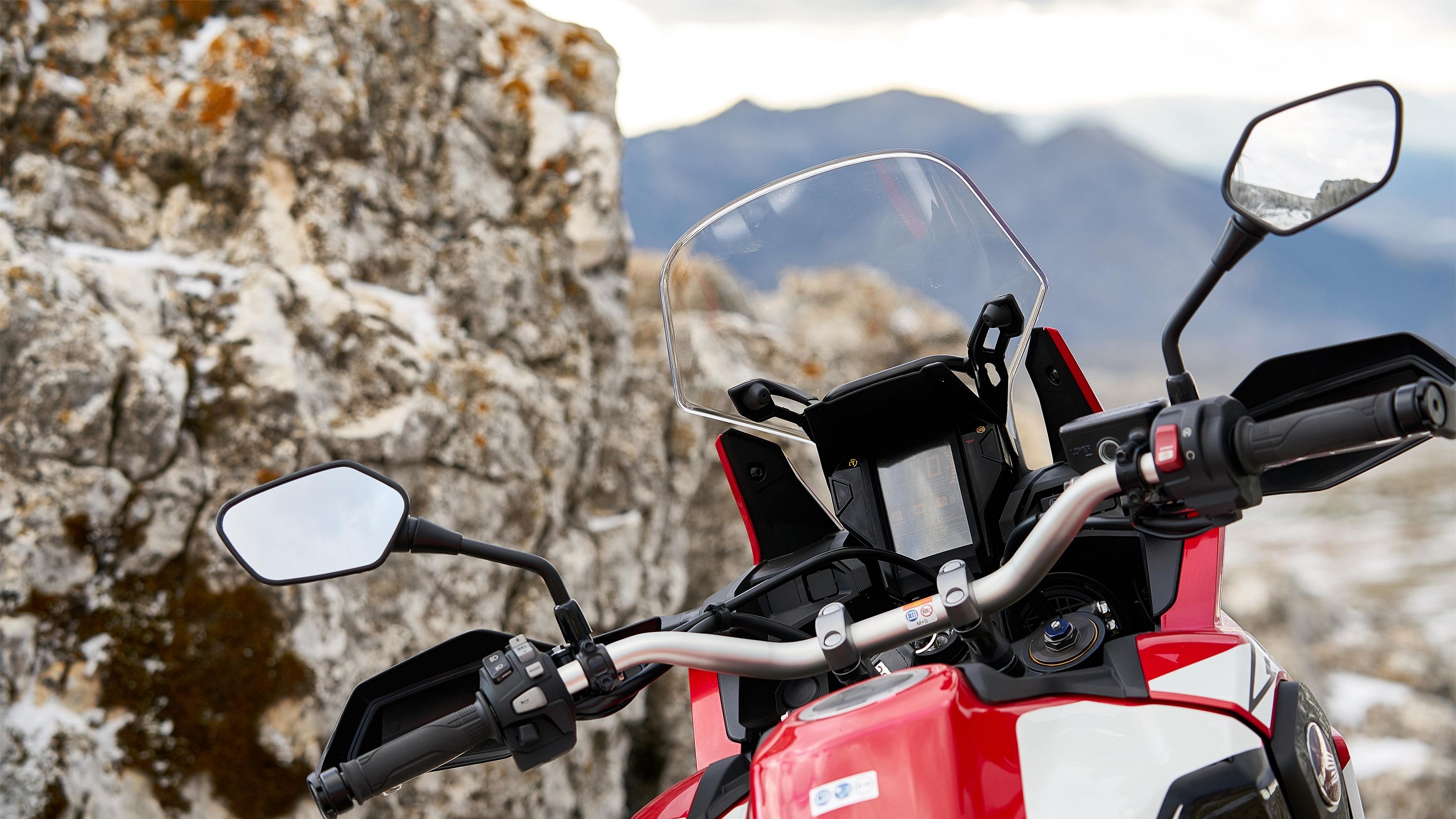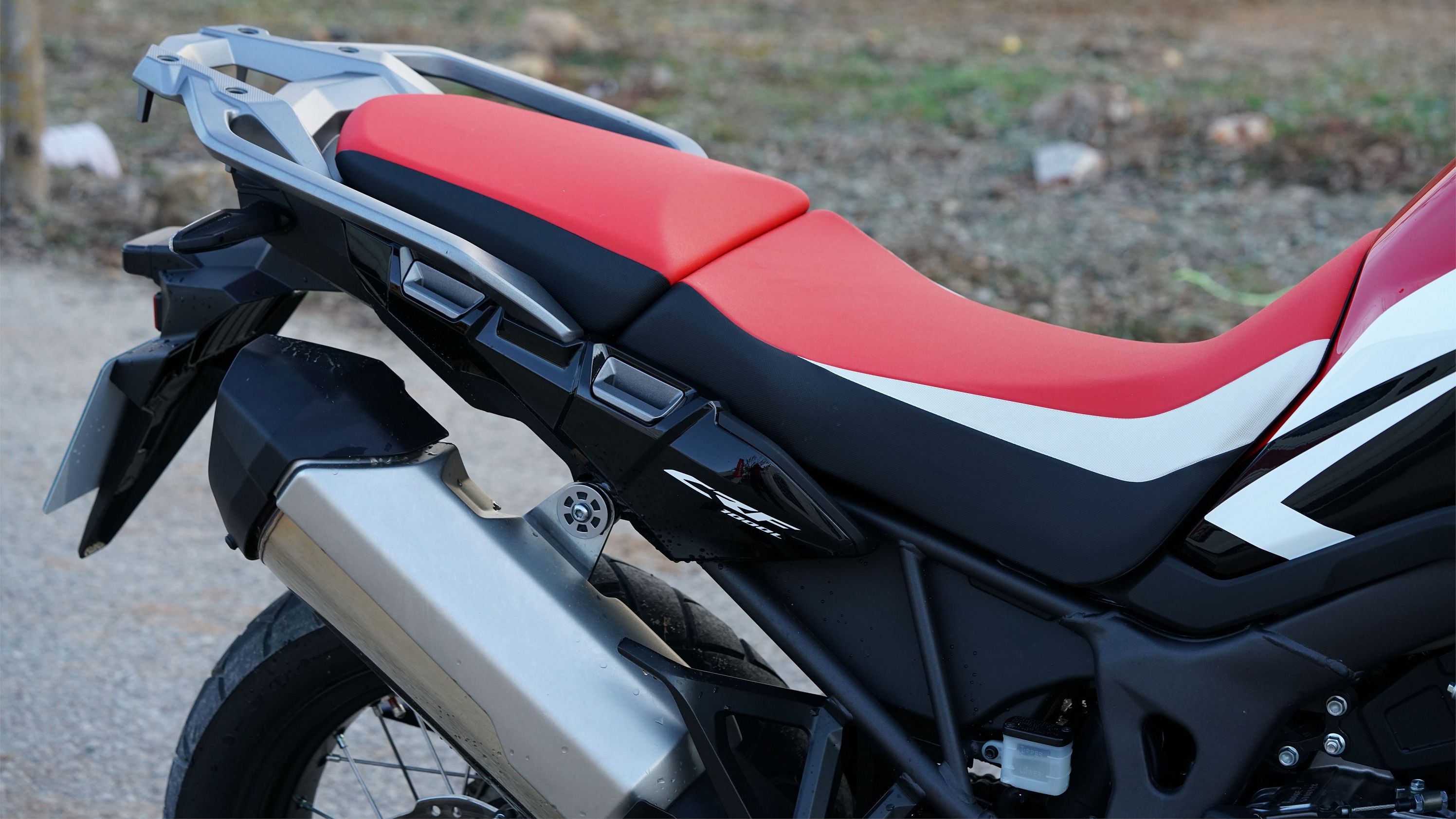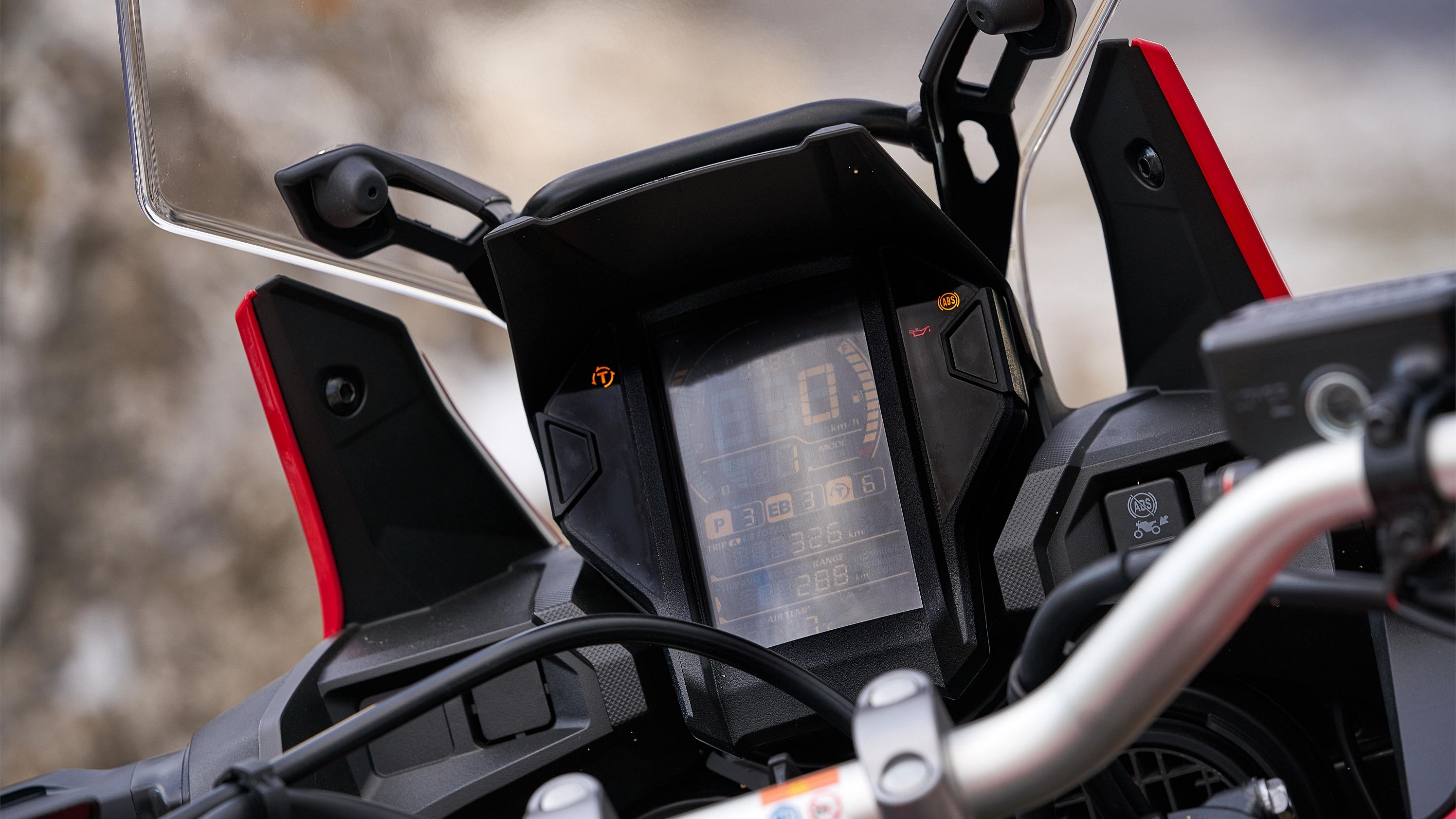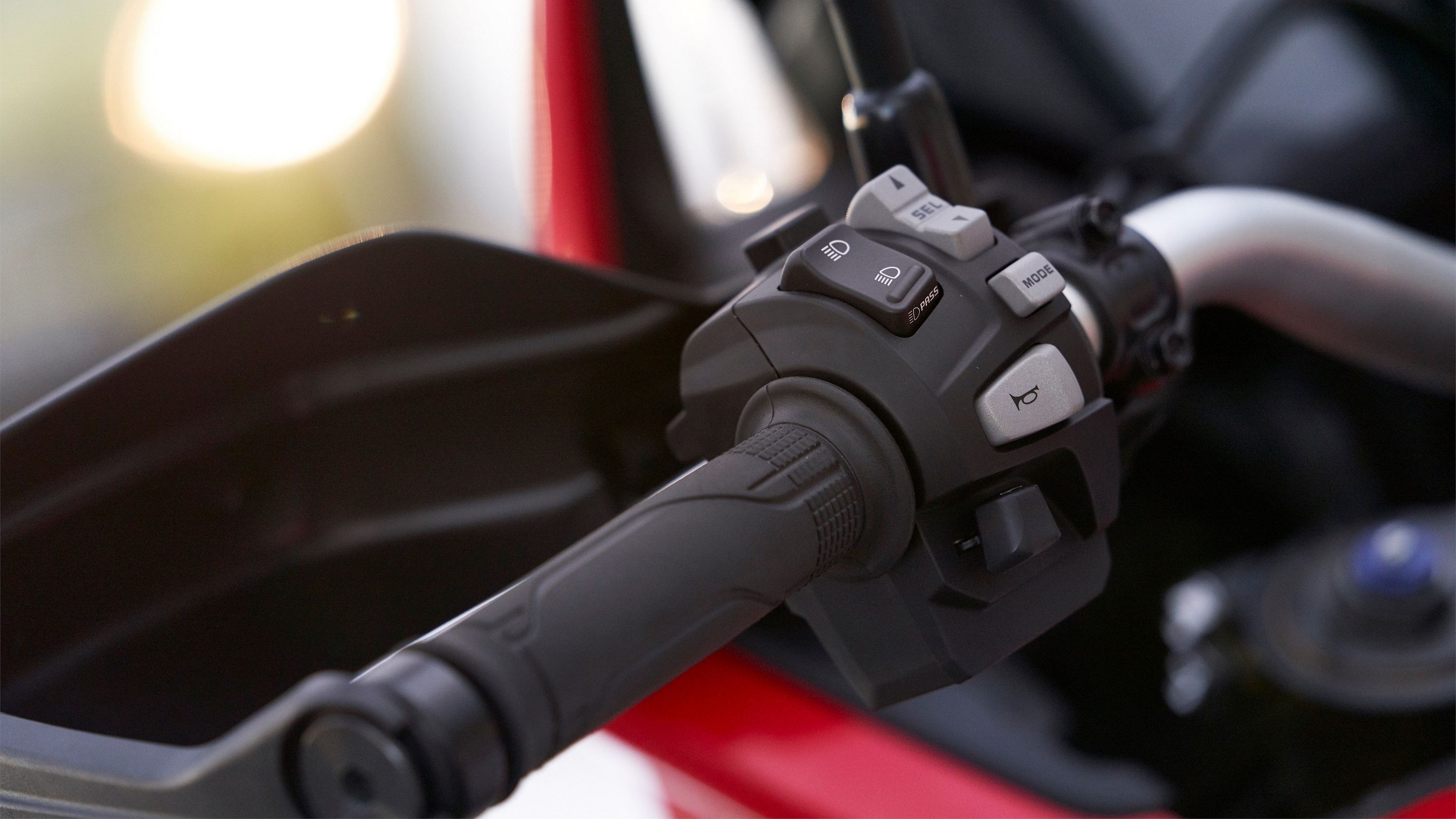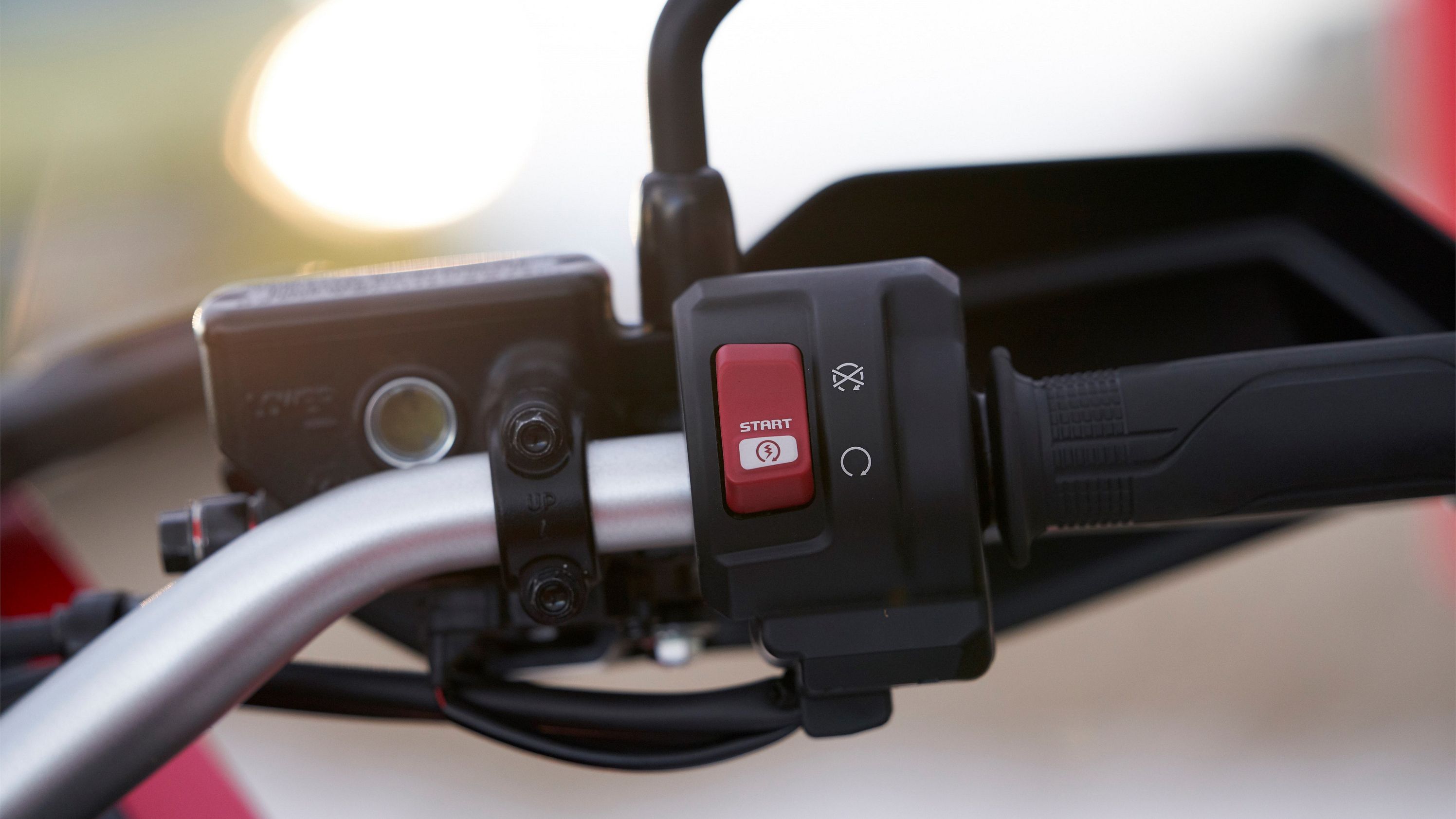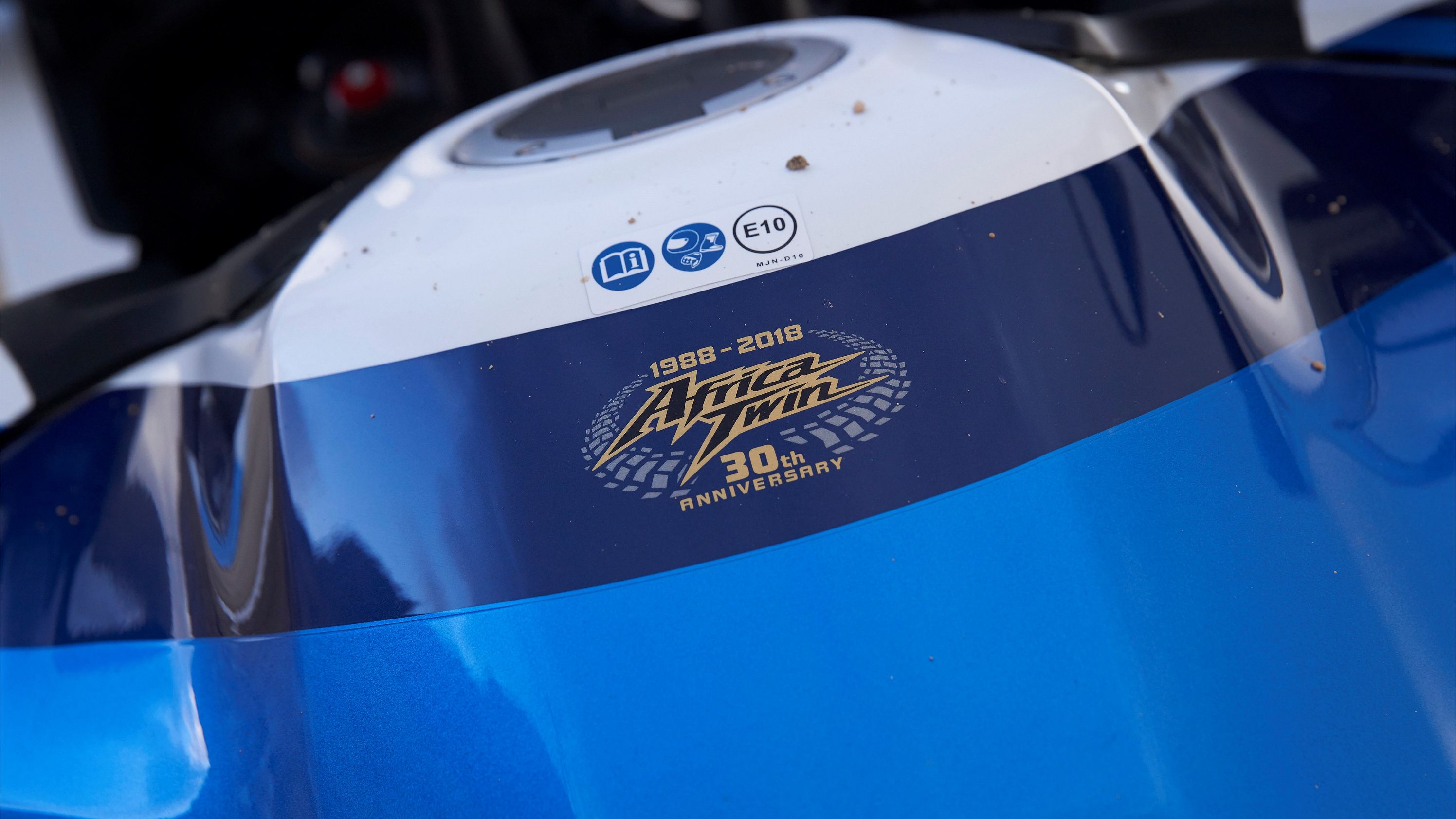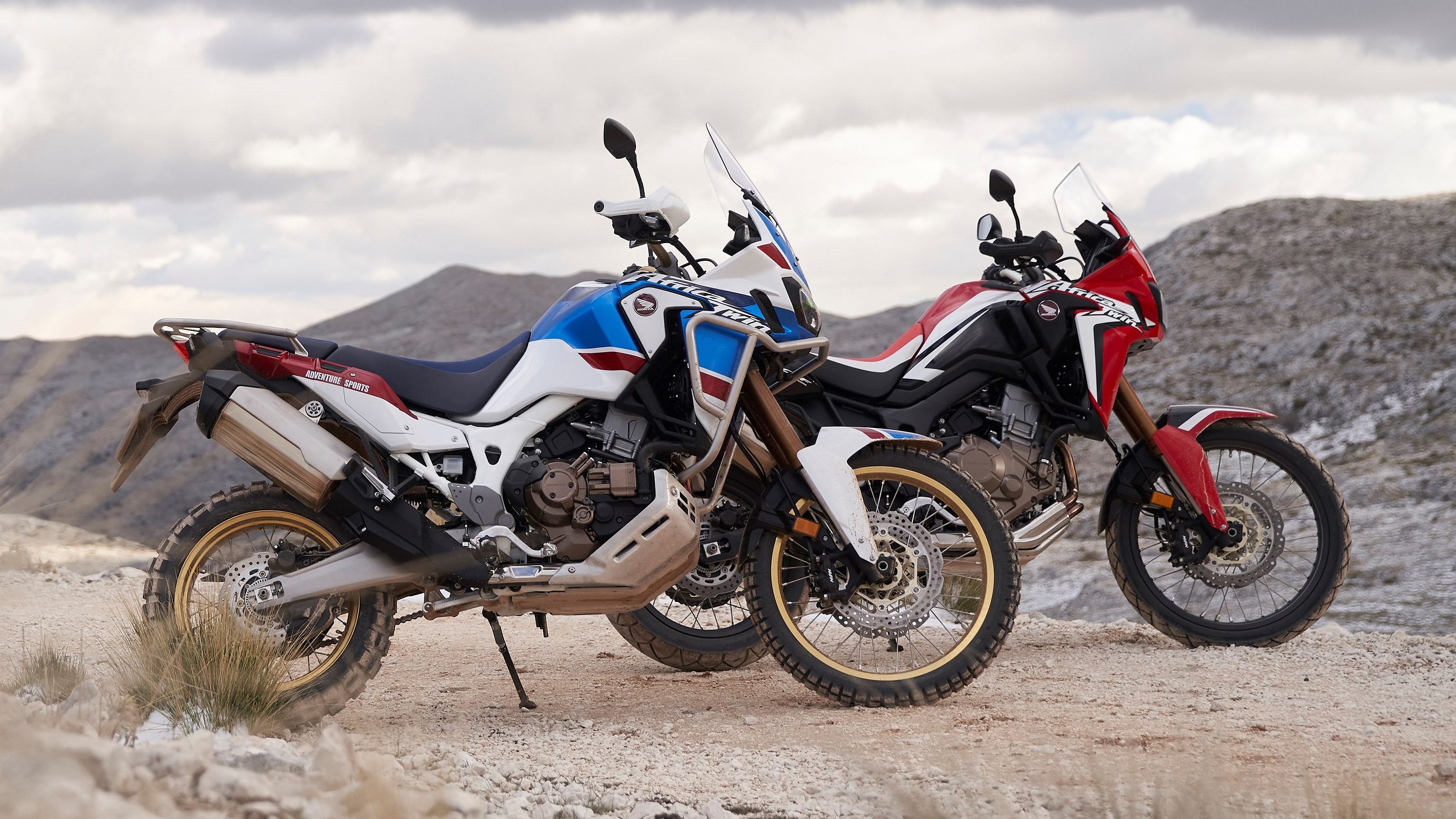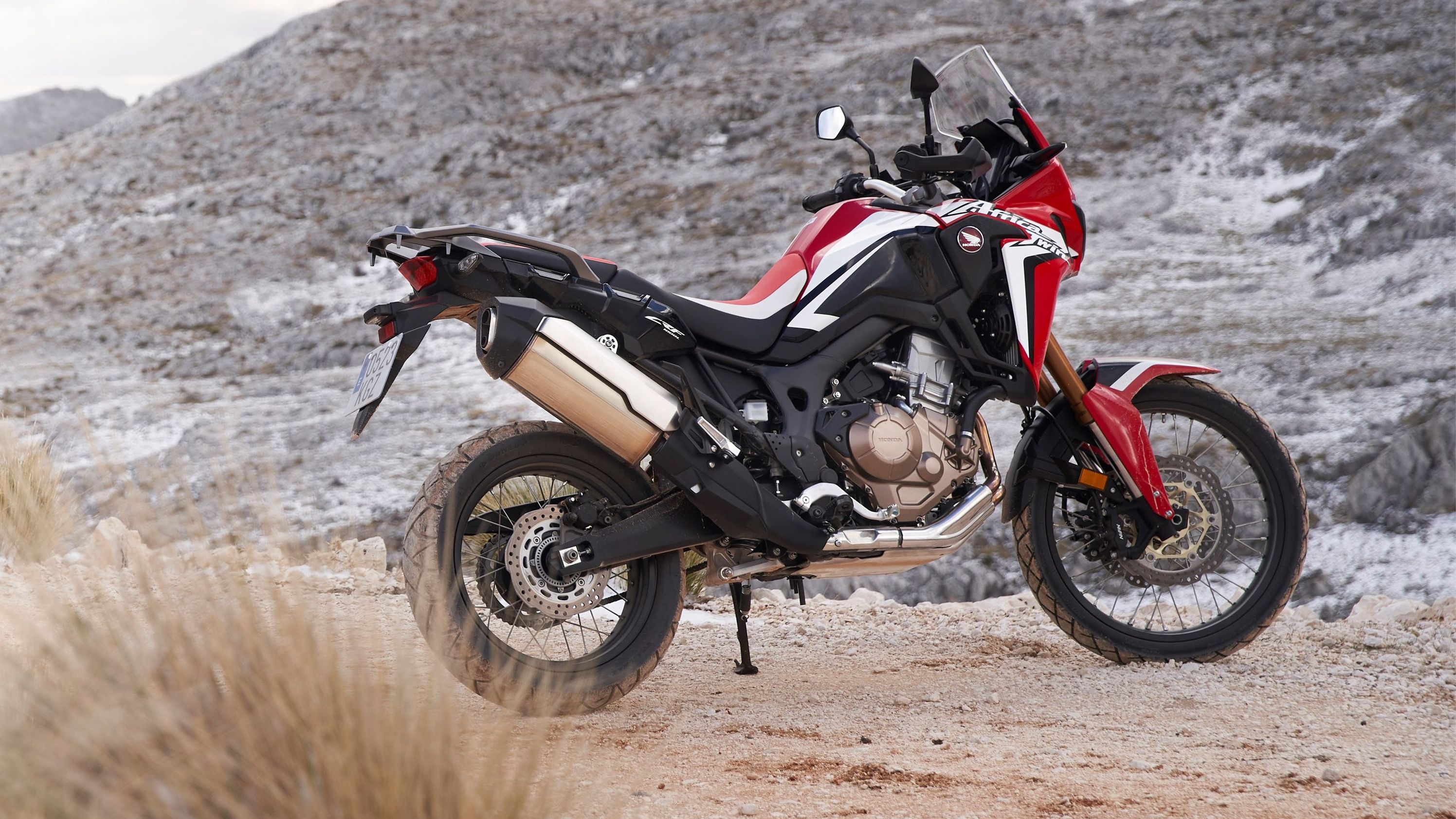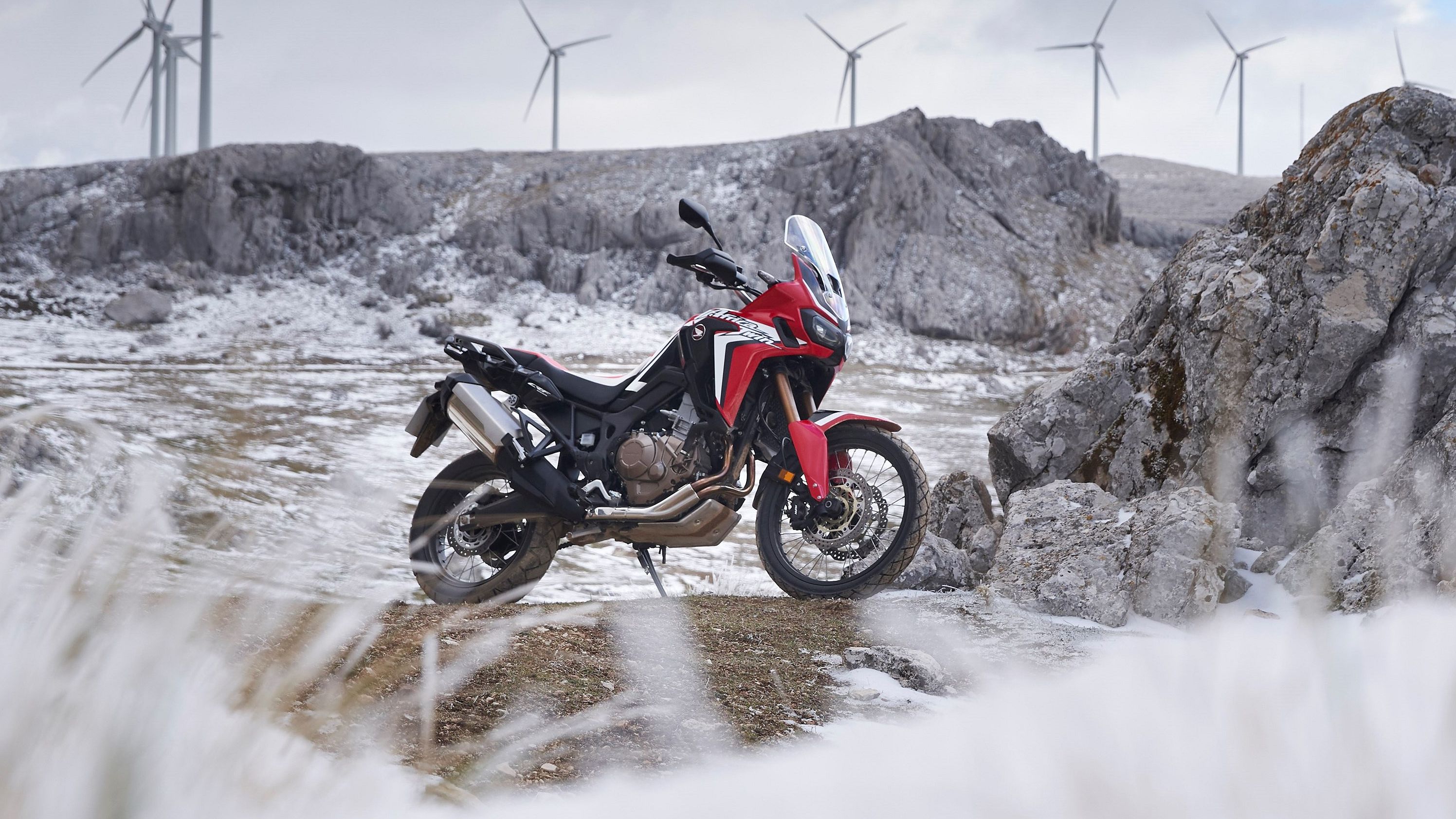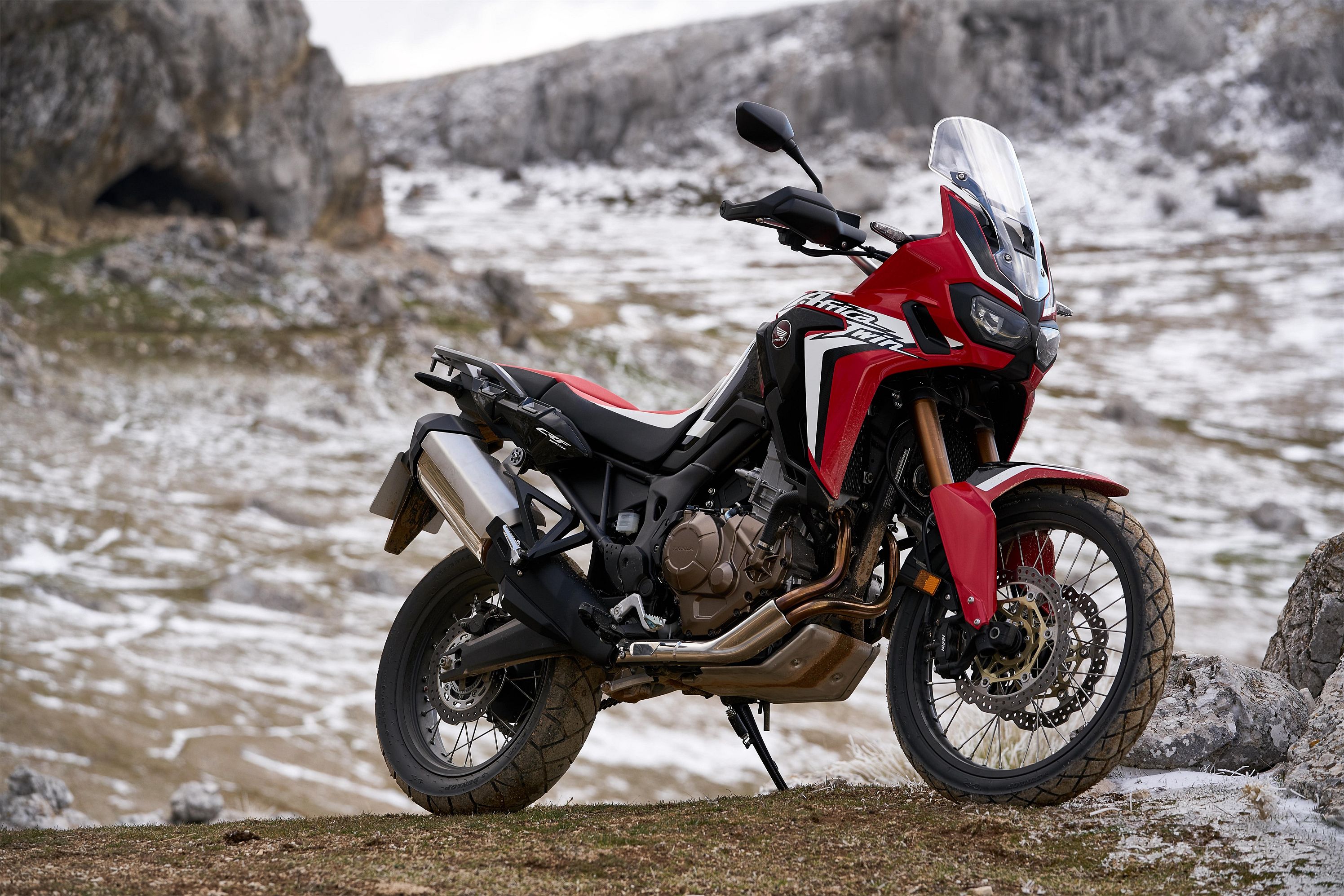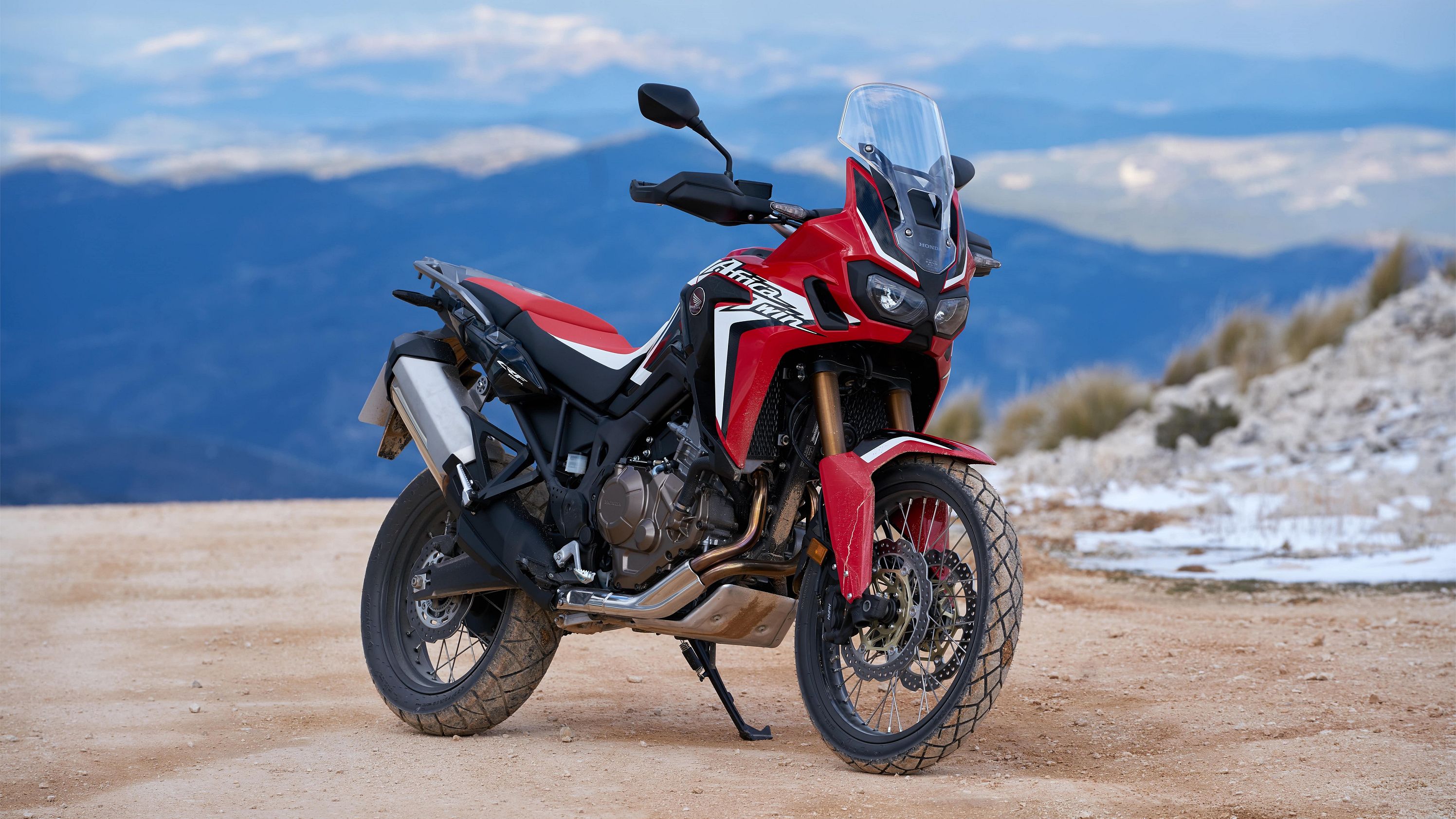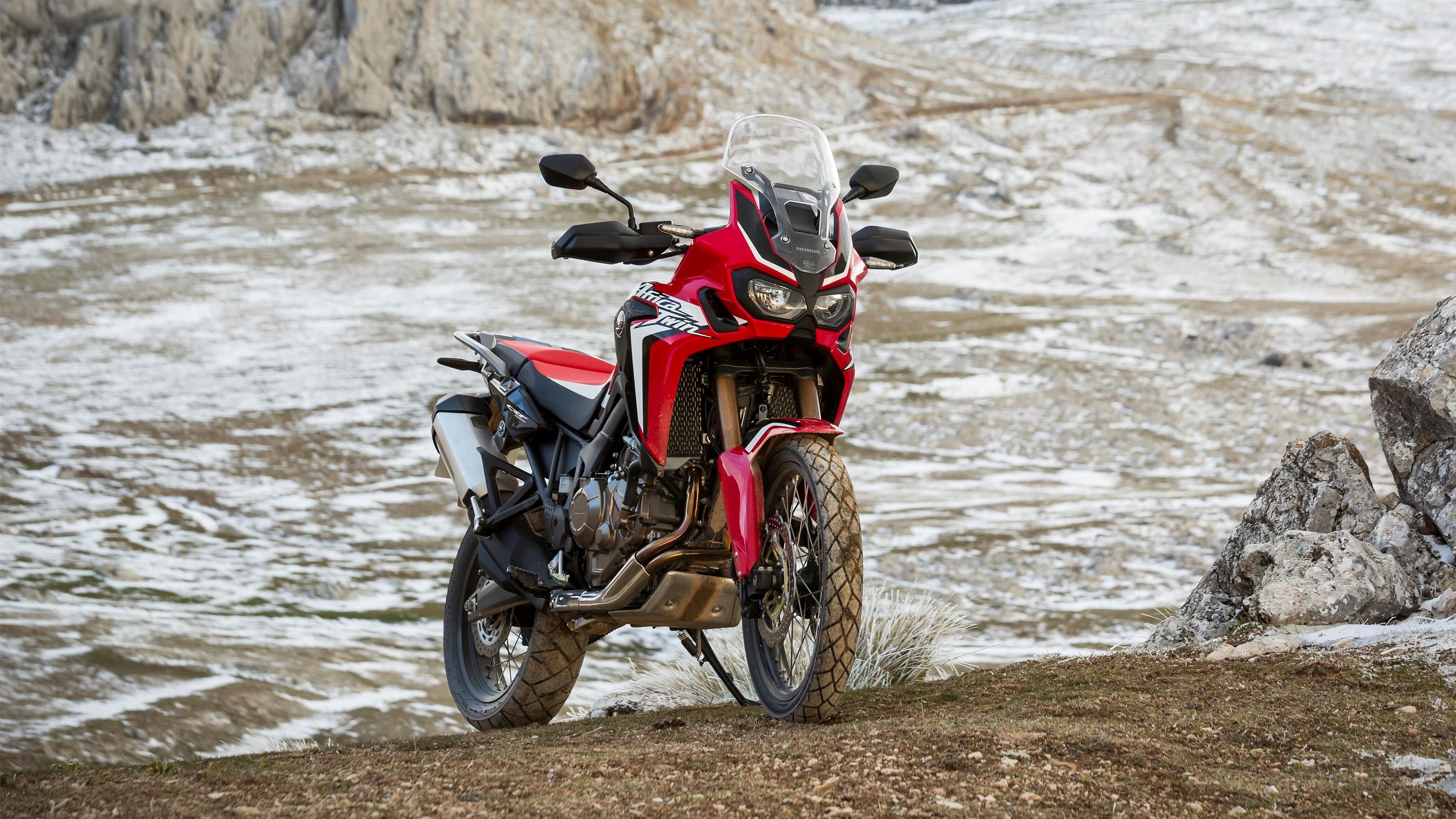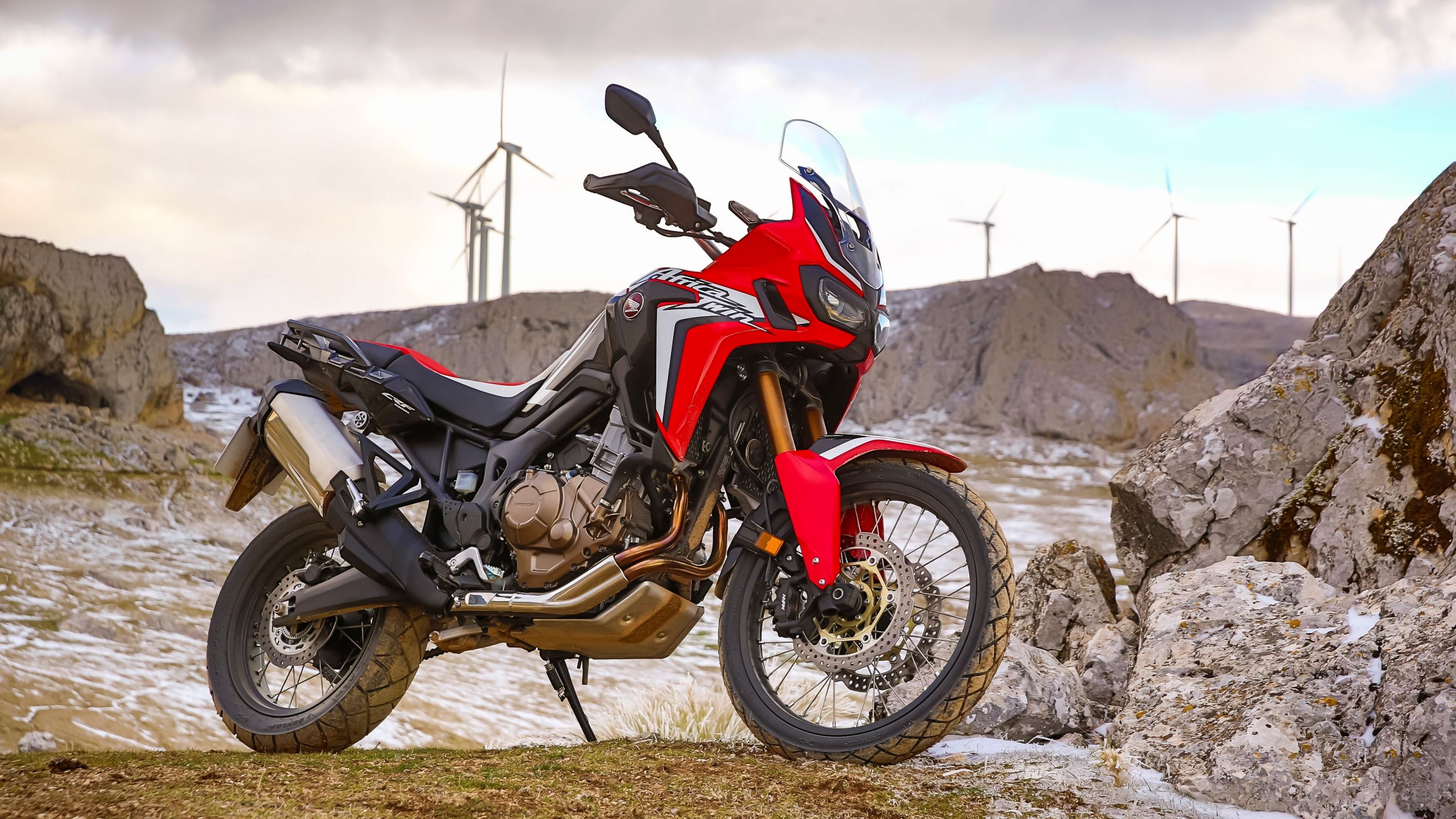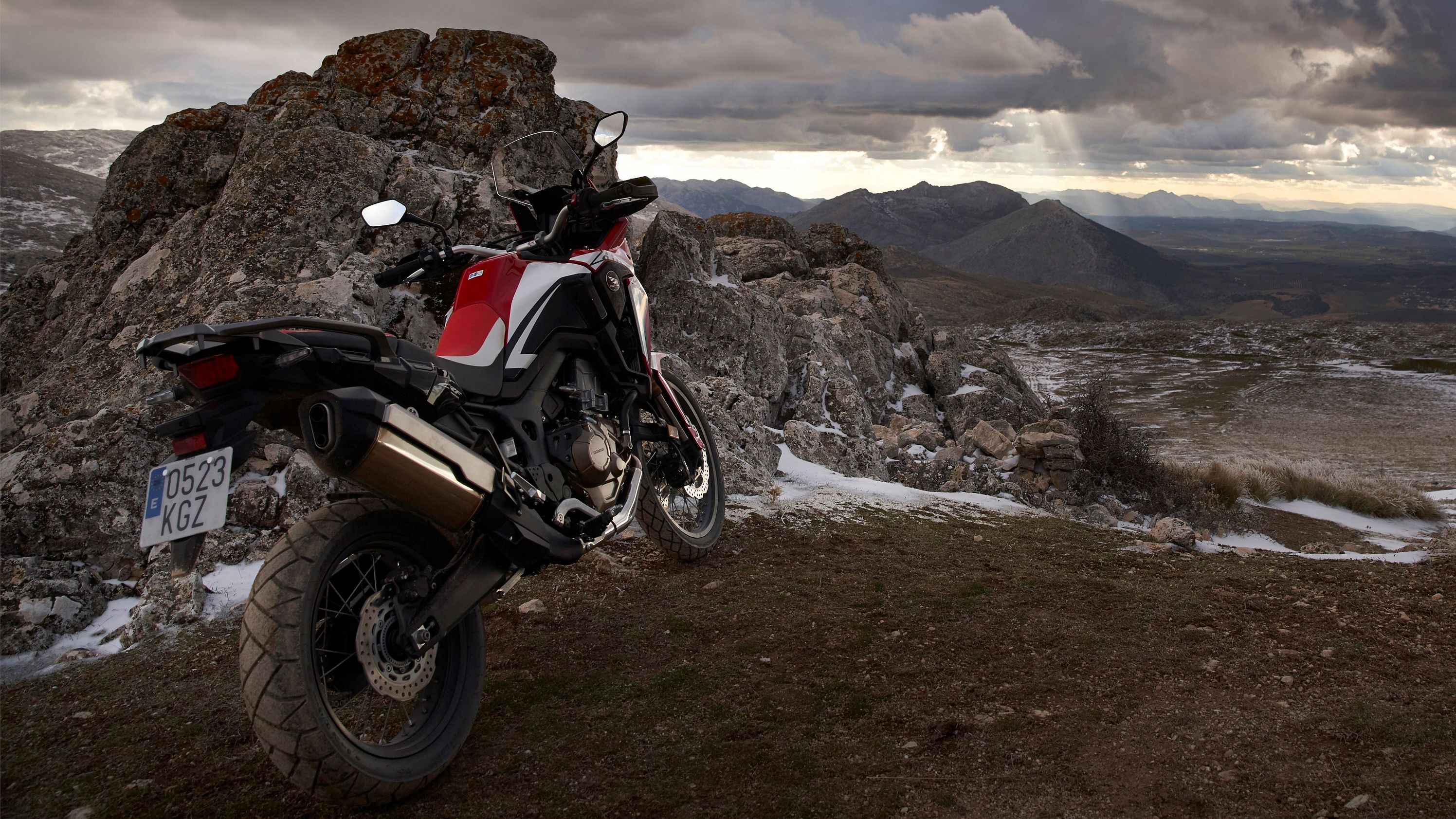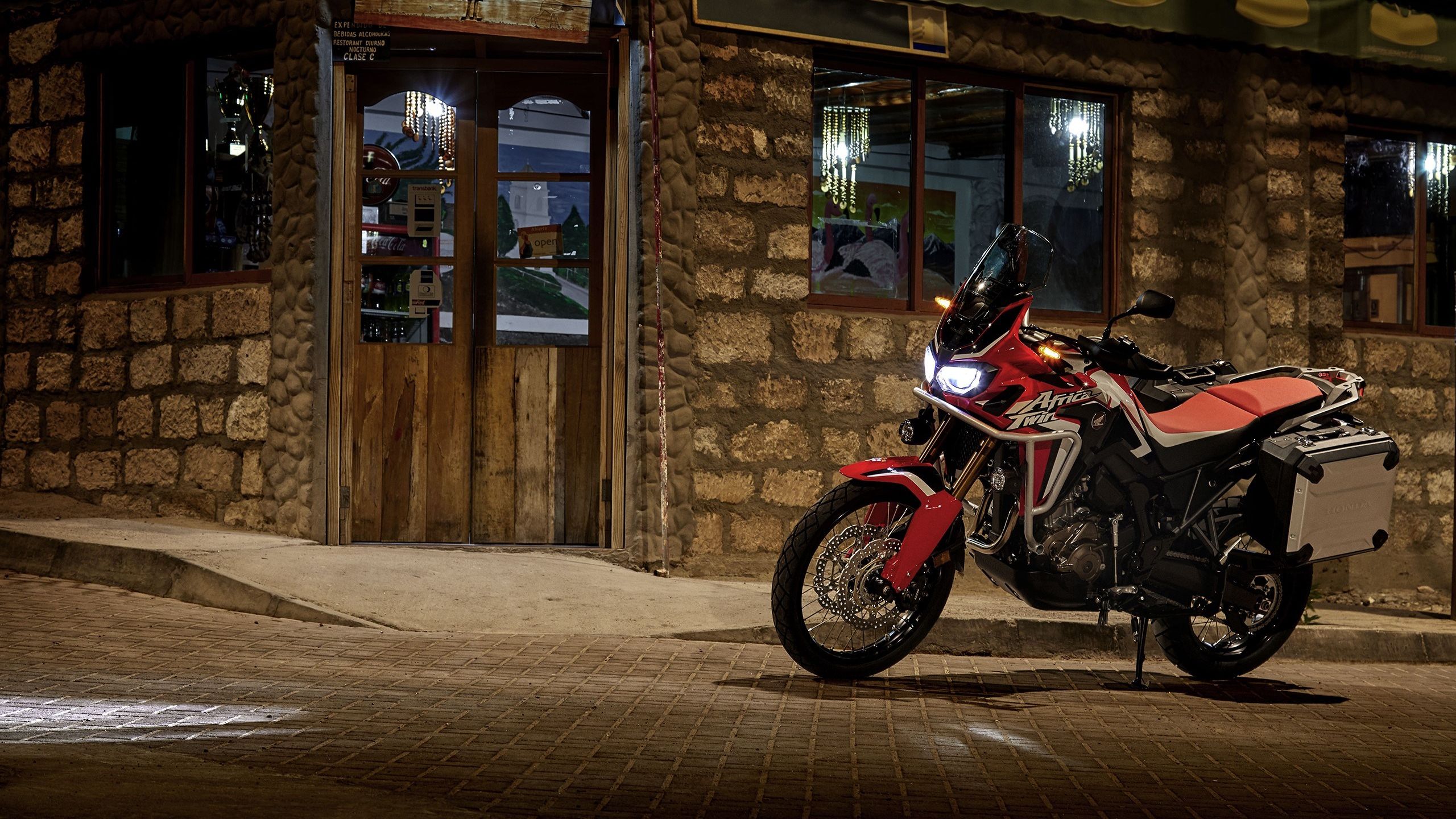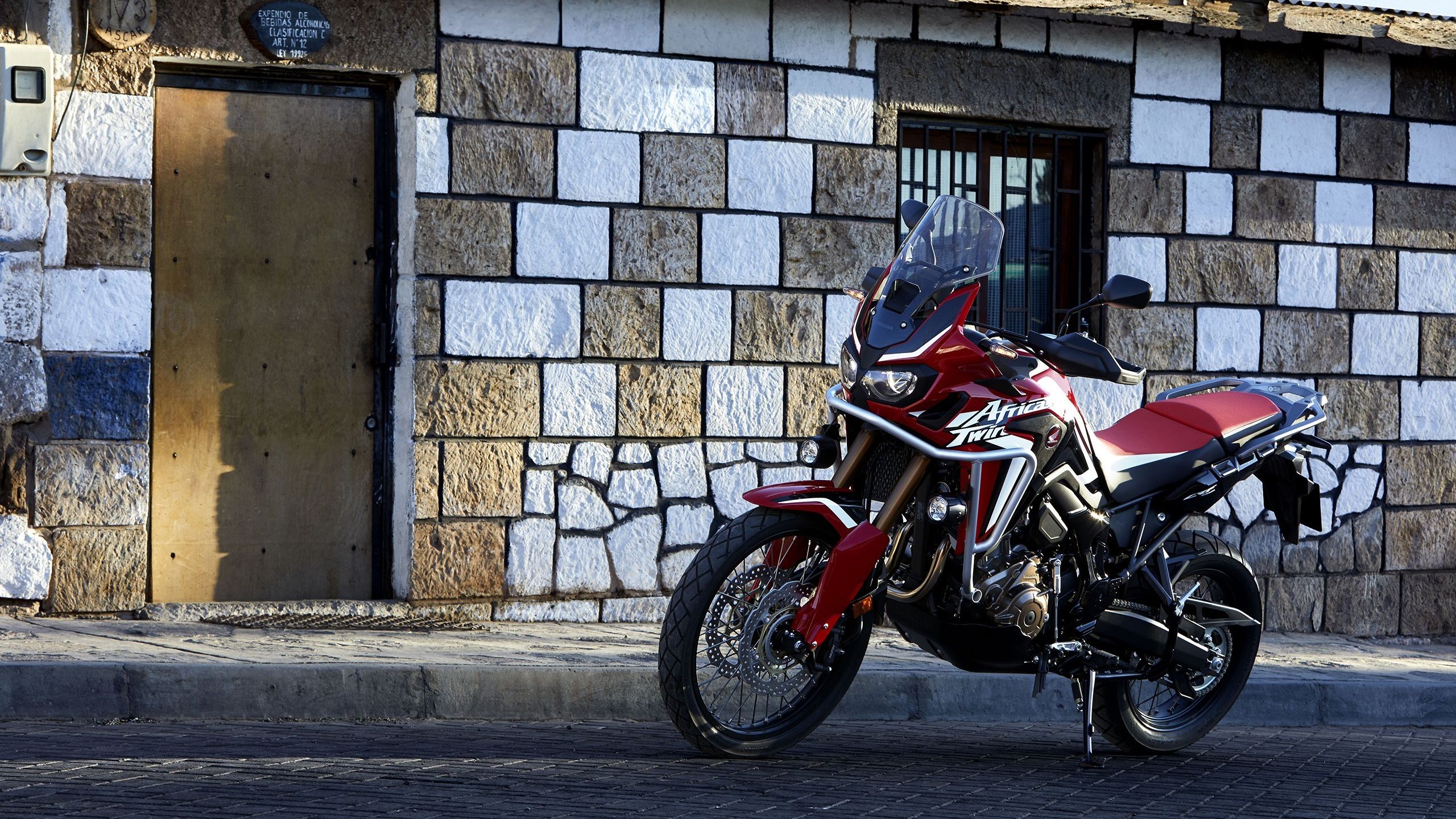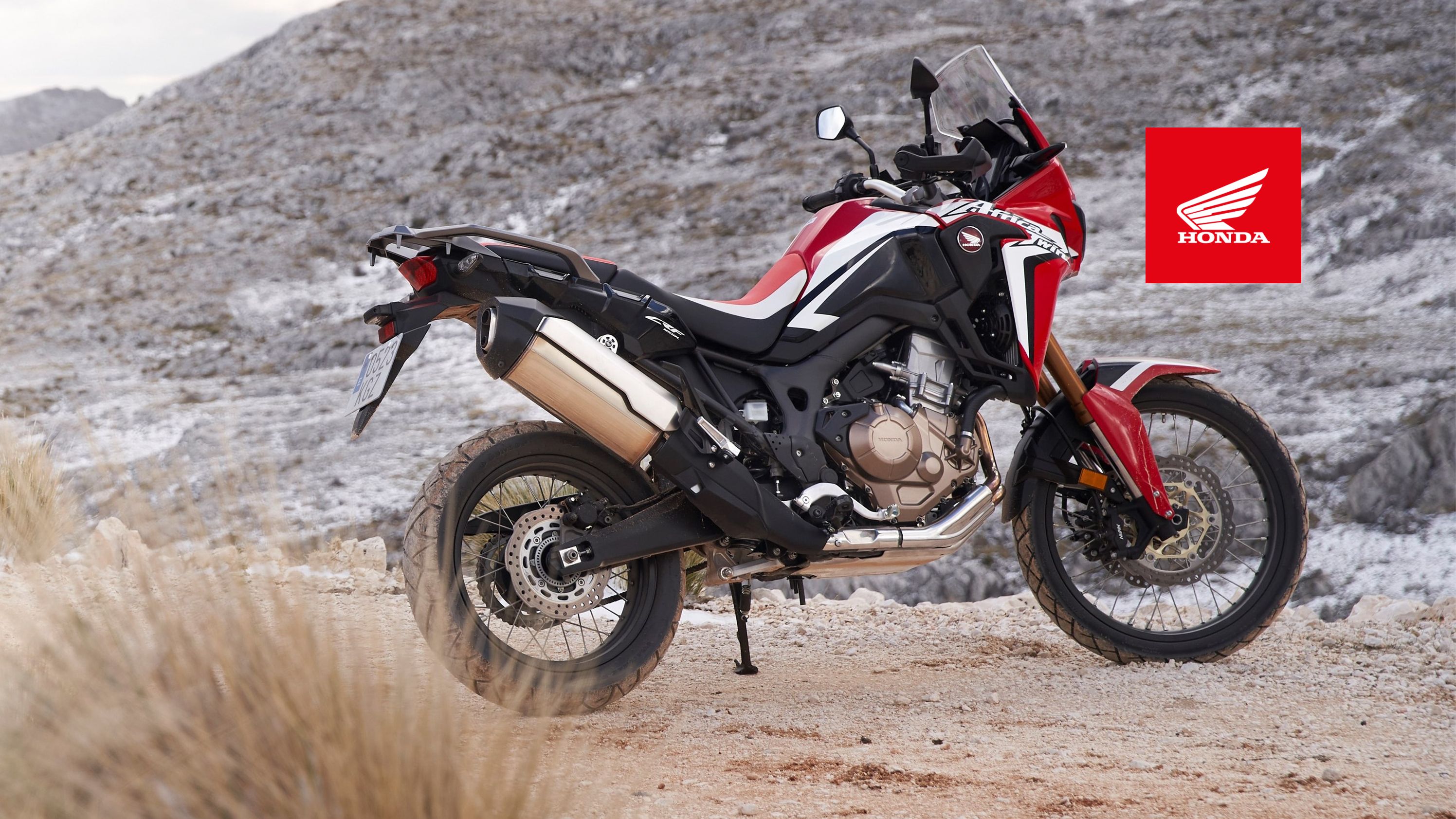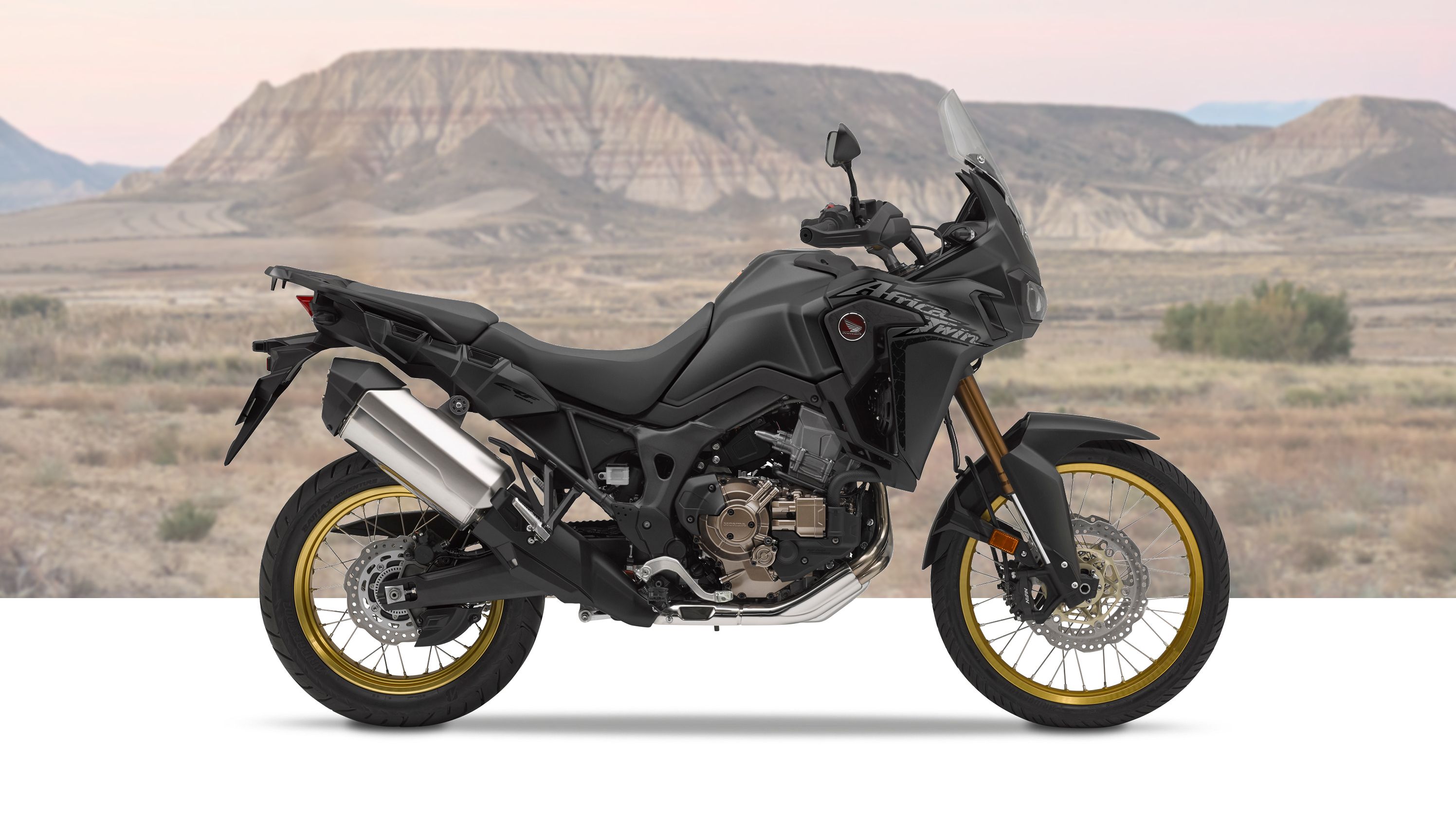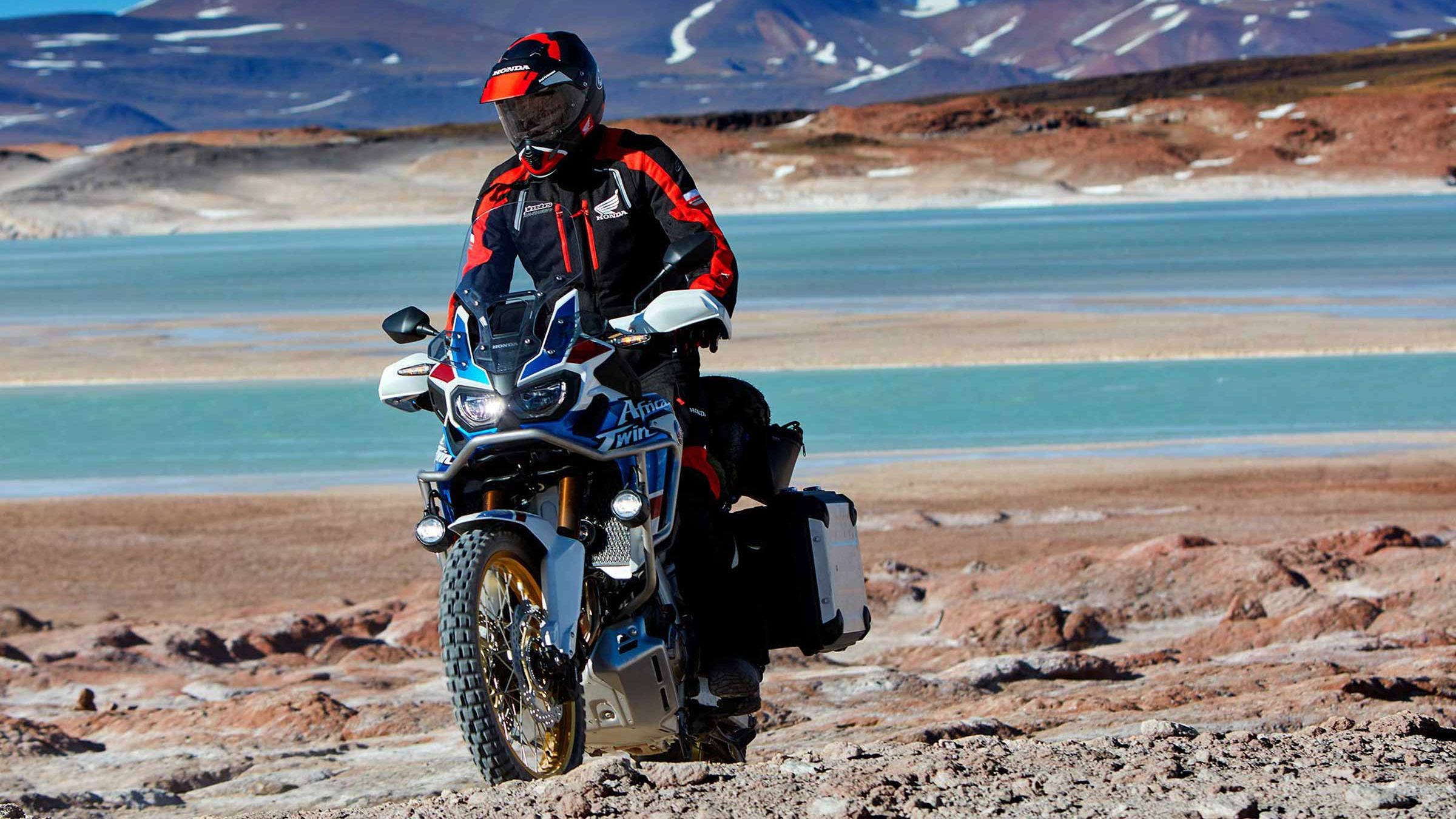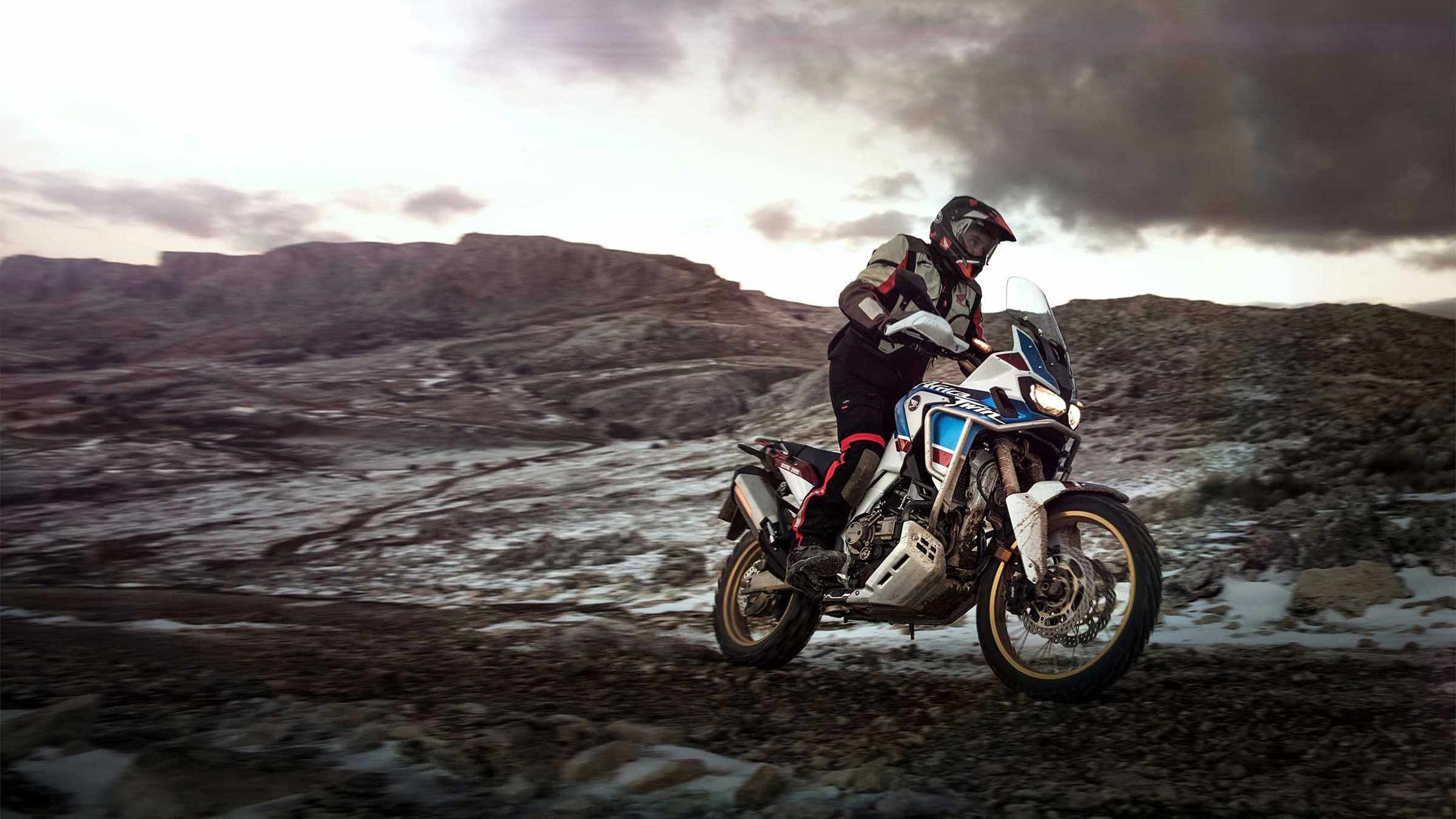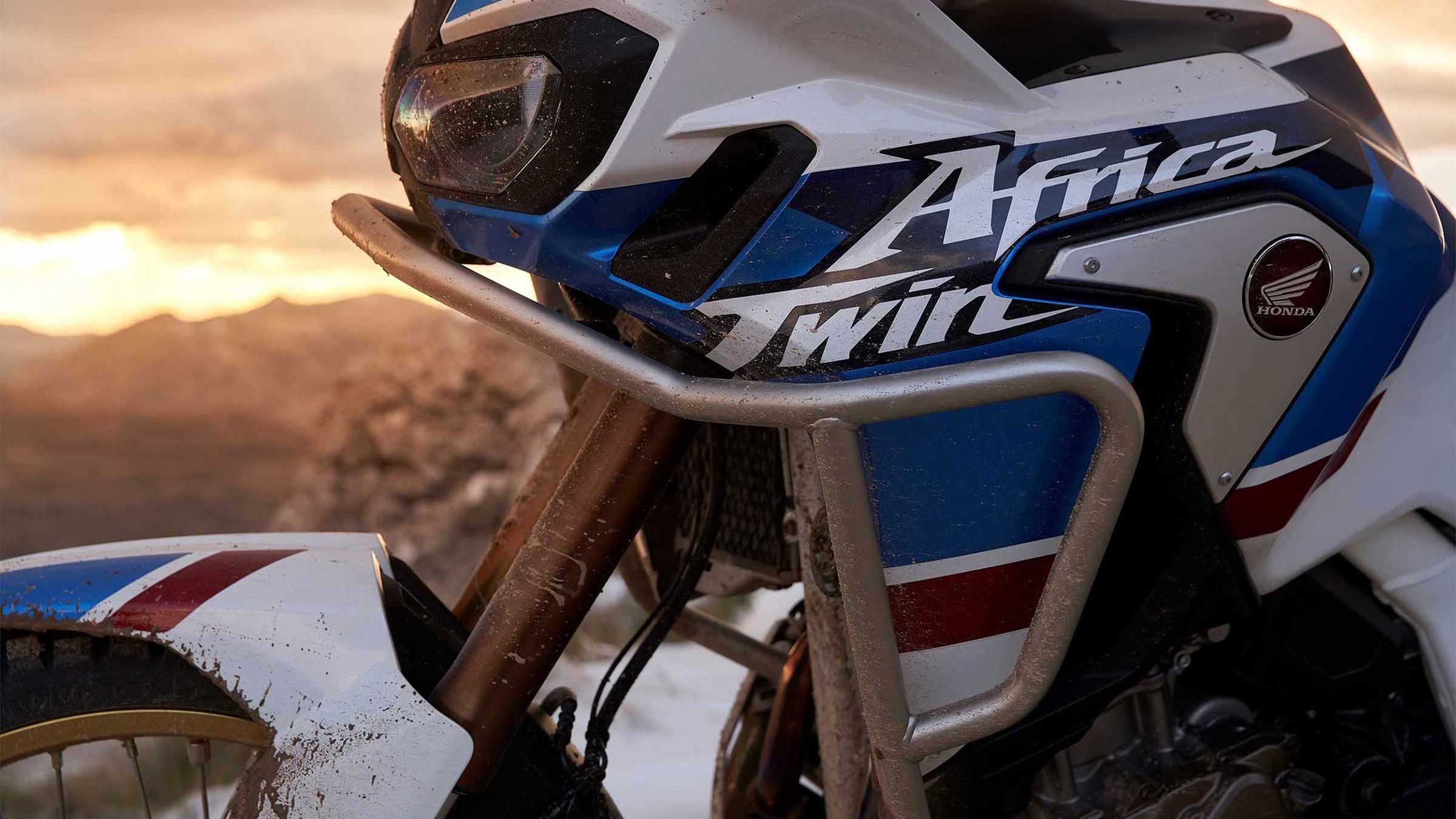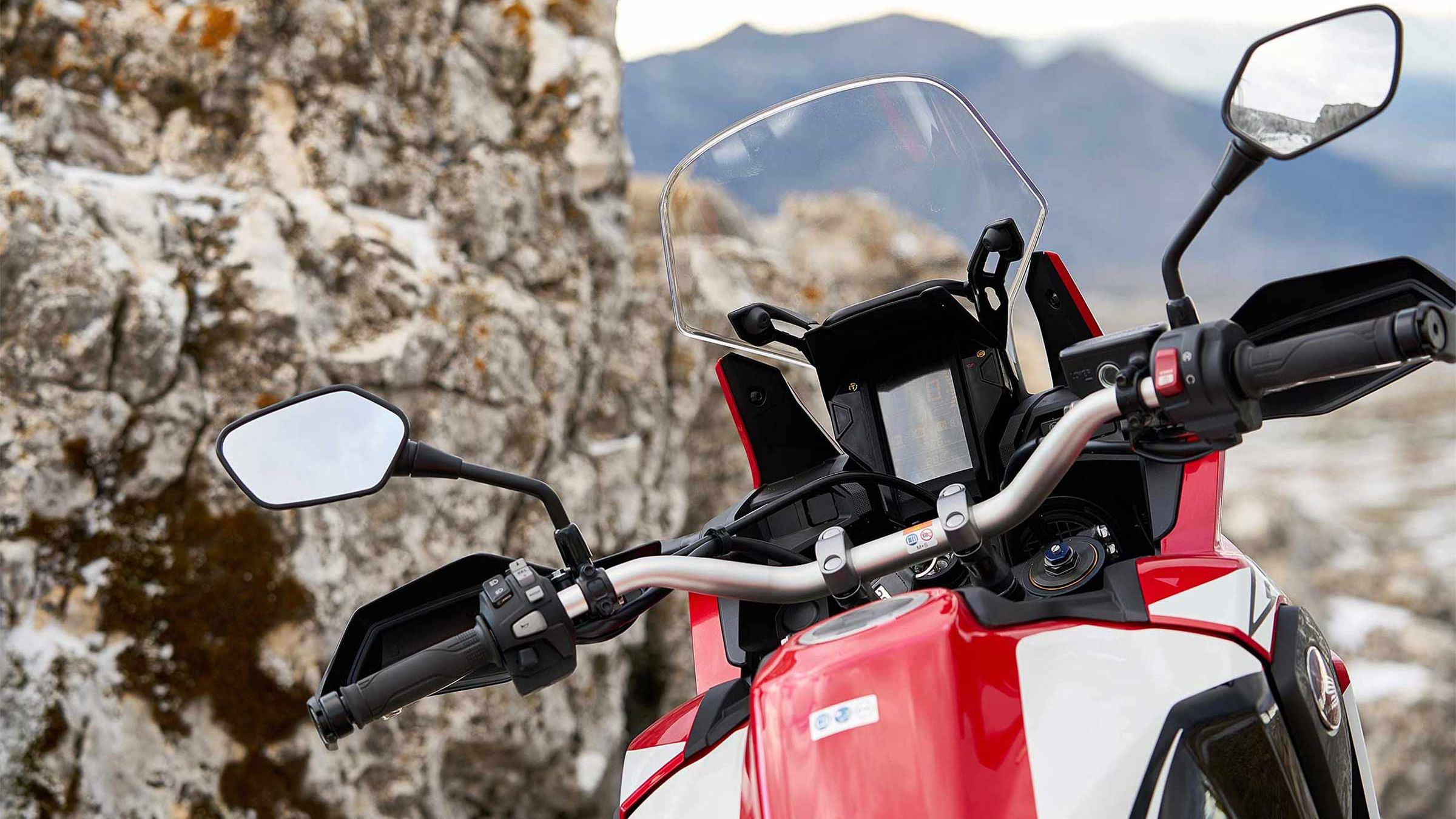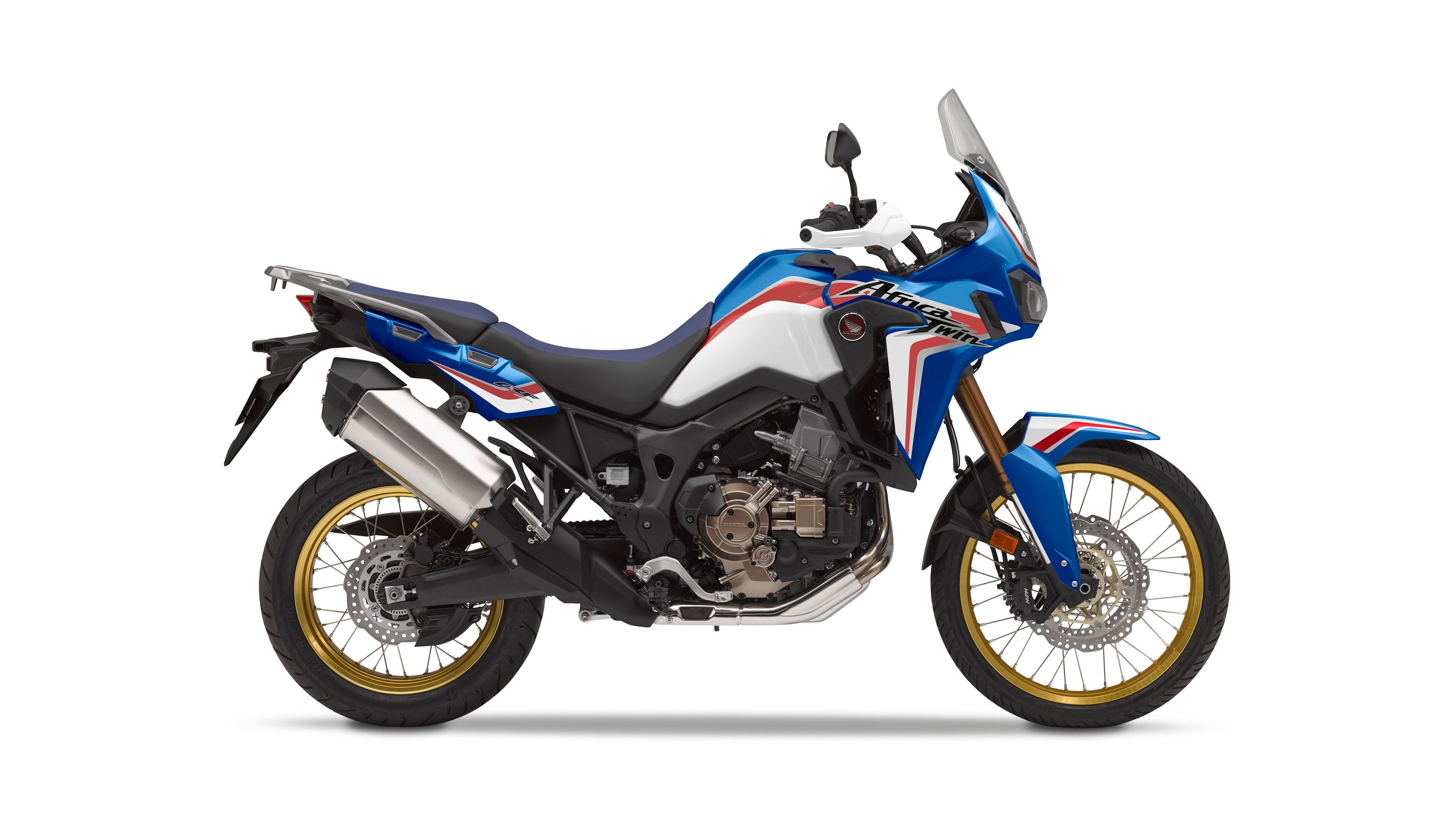Honda gave its CRF1000L “Africa Twin” a complete overhaul for the 2018 model year, a rebuild so complete that the new version shares not a single part with the old, according to the factory. Engine improvements include both hardware and software that starts with a Throttle-by-Wire system that enables even more electronic wizardry under the hood, as it were. The improvements make their way into the gearboxes on both the manual tranny and the optional, auto-shifting DCT. The factory buffed safety as well with a handful of new features such as the Emergency Stop Signal feature that flashes the hazards during hard braking actions. There's plenty more packed in there, so let's go ahead and get into the details.
Continue reading for my review of the Honda Africa Twin.
2018 - 2019 Honda Africa Twin
- Make: Array
- Model: 2018 - 2019 Honda Africa Twin
- Engine/Motor: Parallel-Twin
- [do not use] Vehicle Model: Array
Honda Africa Twin Design
The adventure-bike design characteristics have settled on a more-or-less standard look, but Honda bucks convention with a snub-nosed entry that marks a refreshing change from the ubiquitous bird's-beak fairing. A pair of symmetrical headlights give the new AT a similar visage to that of its predecessor with a vented windshield and fairing that opens up like a cavernous maw to scoop cooling air for the radiator and exhaust headers.
Since the front fender has to put in all the work for spray containment, it comes with a slightly larger build than usual with broad support sections that serve to protect the swept area of the inverted front-fork tube to help preserve the seal throughout your adventures. Handguards provide a measure of protection and comfort that add to the pocket formed by the fairing and shield with an easy-to-read, negative LCD instrument screen that delivers information in nearly the same format as the Dakar race bike.
The 4.97-gallon fuel tank dominates the flyline in class-typical fashion with a rise in the subframe to the pillion pad that leaves the rider's saddle in a rather deep swale that puts the pilot in the bike. A bevel at the seat/tank juncture gives the pilot plenty of room for body English and keeps the above from biting into your thighs when it's time to deploy the training wheels. LED emitters handle the rearward lighting with a proper mudguard/plateholder to handle the fling from the rear tire. The upswept exhaust and skidplate give it a rugged, terrain-defeating look and the wire wheels rounds out the package quite nicely.
But, the previous version was only two-years old, you say? That's true, and Honda's Large Project Leader, Mr. K. Morita, had this to say about it: “Our CRF1000L Africa Twin has proven itself a worthy successor to the original and very much the ‘Go Anywhere’ machine that we set out to make. Over the last two years it’s a motorcycle that’s covered millions of kilometers, and we have received plentiful feedback from owners. For 2018 we have improved the engine’s response, saved weight and given the rider real choice of engine performance and feel.”
Honda Africa Twin Chassis
The Africa Twin rides on a semi-double cradle frame with steel members for strength, flex and durability. Steering geometry grants the AT some stability with 27.5 degrees of rake and 4.4 inches of trail over a 62-inch wheelbase. Laced wheels run with stainless-steel spokes this year for extra toughness and resistance to corrosion with a dual-purpose 90/90-21 hoop up front and a 150/70-18 out back to make the final connection to the pavement/dirt/whatever.
Both the rider's and passenger's pegs were adjusted to be more suitable for off-road use this year, but it's the stems that really do the trick in that department. Beefy 45 mm usd forks float the front end on a generous 9.1 inches of travel with 8.7 inches out back and adjustable compression- and rebound damping features all around plus spring preload out back.
The brakes are serious business as well with dual, 310 mm wave-cut discs and four-pot anchors to slow the front and a 256 mm disc and single-pot caliper at the other end. A two-channel ABS feature provides an extra layer of protection, and for advanced techniques, can be switched off at the rear wheel so you can break the ass-end loose at will.
|
Frame: |
Steel semidouble cradle type with hightensile strength steel rear subframe |
|
Suspension, Front: |
Showa 45 mm cartridge type inverted telescopic fork with hydraulic dial style preload adjuster and DF adjustment, 230 mm stroke, 204 mm axle travel |
|
Suspension, Rear: |
Monoblock cast aluminum swing arm with ProLink with gascharged damper, hydraulic dialstyle preload adjuster and rebound damping adjustment, 220 mm rear wheel travel, 94 mm axle stroke |
|
Rake: |
27.5° |
|
Trail: |
4.4 in (113 mm) |
|
Brakes, Front: |
310 mm dual wave floating hydraulic disc with aluminum hub and radial fit 4 piston |
|
calipers and sintered metal pads |
|
|
Brakes, Rear: |
256 mm wave hydraulic disc with single piston caliper and sintered metal pads. Also Lever Lock Type Parking Brake System on DCT model with additional slide type single piston caliper |
|
ABS system: |
2 Channel with rear ABS off switch |
|
Wheels, Front & Rear: |
Wire spoke with aluminum rim |
|
Rim, Front: |
21M/C x MT2.15 |
|
Rim, Rear: |
18M/C x MT4.00 |
|
Tires, Front: |
90/90R21 tube type |
|
Tires, Rear: |
150/70R18 tube type |
Honda Africa Twin Drivetrain
The beating heart is a 998 cc, parallel-twin engine that runs with a 92 mm bore and 75 mm stroke just like last year, but the new plant sports a number of improvements that start with a new, 20 mm longer intake and free-flowing exhaust that opens up the entire circuit to let the engine breathe through the twin-spark/four-valve combustion chambers. A lighter balance shaft reduces overall weight alongside the lithium-ion battery that drops another five pounds off the final tally. Power clocks in at 93 ponies at 7,500 rpm, and torque delivery is flat and predictable with 73 pounds o' grunt at six grand even. It flows through an anti-hopping slipper clutch and six-speed transmixxer on the stock version.
If you fancy a ride with a little bit lower pilot load, Honda is your Huckleberry as it offers its Dual Clutch Transmission as an available option. The DCT runs the usual push-button, manual shift mode plus the fuel-efficient “D” mode and the sporty “S” mode that comes with three separate shift patterns, plus the “G” mode that is tuned for off-road performance.
New for last year is the TbW system that enables a three-channel riding-mode feature that allows you to tune the engine's character to suit local conditions with Honda's proprietary torque-control system that also got tweaked to have greater input range, and like its predecessor, can be turned off entirely for a full-raw ride. The riding modes feature actually controls a trinity of factors -- available power, engine braking, and traction control -- for a one-stop shop to help you quickly dial in.
Finally, as a matter of mathematics, the 270-degree firing order gives the mill a nice lope at idle and delivers solid traction on soft surfaces as the delay in power pulses gives the rear wheel the opportunity to grab a hold before the next pulse arrives; just what you want for soft terrain, plus it makes a dandy hill-climber.
|
Engine: |
Liquid cooled, 4 stroke, 8 valve parallel twin with 270° crank and Unicam |
|
Displacement: |
998 cc |
|
Bore & Stroke: |
92.0 x 75.1 mm |
|
Max. Power Output: |
93.9 hp (70kW) @ 7,500 rpm |
|
Max. Torque: |
73 lb-ft (99 Nm) @ 6,000 rpm |
|
Clutch: |
MT: Wet, multiplate with coil springs, Aluminum Cam Assist and Slipper clutch / DCT: 2 Wet multiple clutches |
|
Gearbox : |
Constant mesh 6 speed MT / 6speed - DCT with on and offroad riding modes |
|
Final Drive: |
O-ring sealed chain |
Honda Africa Twin Price
In spite of the improvements last year year, Honda only raised the price a few bills over the previous generation with a $13,599 sticker. It rolls in a tasteful Matte Black Metallic finish, or if you're into more flashy livery, perhaps the red/blue/white livery will be more your style.
|
Warranty: |
One Year, Transferable, Unlimited-Mileage Limited Warranty (Optional extended coverage available with a HondaCare Protection Plan®) |
|
Color: |
|
|
2018: |
Matte Black Metallic, Red/Black/White |
|
2019: |
Matte Black Metallic, Blue/White/Red |
|
Price: |
|
|
2018: |
$13,499 (DCT: $14,199) |
|
2019: |
$13,599 (DCT: $14,399) |
Honda Africa Twin Competitors
While there are no shortage of large-displacement adventure bikes out there right now, the Africa Twin's extensive rebuild warrants a fresh competitor and Triumph's recently refurbished Tiger 1200 XR fits the bill nicely. As a matter of personal taste, Honda's AT wins the beauty pageant with its clean front end opposed to the bird's beak fairing on the Tiger, and it also looks better in profile at the fairing as well. Yeah, I realize form follows function and that the Trumpet performs admirably, but this is one of the rare times that I prefer the looks of the Honda over something else, and I'm gonna get some mileage out of it. The Tiger does carry a nice industrial look, largely because of its exposed frame and Britishness in general, and is by no means a bad-looking bike, ya know, unless you park it next to a Multistrada of course...
The anchors are a mixed bag with a pair of 305 mm discs up front and a 282 mm one out back versus 310/256 on the Honda. Both come with ABS, but Honda only allows the rear ABS to be disabled while Triumph lets you turn it off altogether for a full-raw ride. Suspension breaks even with adjustable compression- and rebound-adjusters at the forks plus the full trinity at the back, so neither gain anything here.
Triumph packs in a few more cubes with its 1,215 cc triple that churns out 141 horsepower and 90 pound-feet against 93/73 from Honda's 998 cc twin, not surprising, but I submit that you can only use so much of the available power in most circumstances, and will never will be able to transmit all that power to the ground on soft surfaces, so the AT's power is definitely sufficient. Oh, and the DCT gearbox available on the AT gives it a riding experience all its own and opens the genre up to riders who prefer/need that automatic shifter.
So far, it's kind of back and forth depending on taste, but something I think we all can agree on is that the $13,499 tag is a lot more attractive than the $16,500 sticker on the Tiger.
He Said
“I've always thought Honda's new Africa Twin was a winner, and it looks like the factory is ensuring it stays that way by showing it some serious love with a complete rebuild after its predecessor was on the market for only two years. That's a sign that confidence is pretty high in this model, and that the factory expects it to continue performing at least into the immediate future.”
She Said
My wife and fellow motorcycle writer, Allyn Hinton, says, “The previous Africa Twin was a bit more road-oriented. After the 2018 update, this bike is a lot more off-road capable than I would have given it credit for before. It joins the Africa Twin Adventure Sports in the adventure stable, both of which really step up Honda's game in this popular genre. It is a very tall bike even with the low seat, so tip-toeing with bags and a passenger might be a bit much.”
Honda Africa Twin Specifications
|
Engine & Drivetrain: |
|
|
Engine: |
Liquid cooled, 4 stroke, 8 valve parallel twin with 270° crank and Unicam |
|
Displacement: |
998 cc |
|
Bore & Stroke: |
92.0 x 75.1 mm |
|
Max. Power Output: |
93.9 hp (70kW) @ 7,500 rpm |
|
Max. Torque: |
73 lb-ft (99 Nm) @ 6,000 rpm |
|
Clutch: |
MT: Wet, multiplate with coil springs, Aluminum Cam Assist and Slipper clutch / DCT: 2 Wet multiple clutches |
|
Gearbox : |
Constant mesh 6 speed MT / 6speed - DCT with on and offroad riding modes |
|
Final Drive: |
O-ring sealed chain |
|
Chassis: |
|
|
Frame: |
Steel semidouble cradle type with hightensile strength steel rear subframe |
|
Suspension, Front: |
Showa 45 mm cartridge type inverted telescopic fork with hydraulic dial style preload adjuster and DF adjustment, 230 mm stroke, 204 mm axle travel |
|
Suspension, Rear: |
Monoblock cast aluminum swing arm with ProLink with gascharged damper, hydraulic dialstyle preload adjuster and rebound damping adjustment, 220 mm rear wheel travel, 94 mm axle stroke |
|
Rake: |
27.5° |
|
Trail: |
4.4 in (113 mm) |
|
Brakes, Front: |
310 mm dual wave floating hydraulic disc with aluminum hub and radial fit 4 piston |
|
calipers and sintered metal pads |
|
|
Brakes, Rear: |
256 mm wave hydraulic disc with single piston caliper and sintered metal pads. Also Lever Lock Type Parking Brake System on DCT model with additional slide type single piston caliper |
|
ABS system: |
2 Channel with rear ABS off switch |
|
Wheels, Front & Rear: |
Wire spoke with aluminum rim |
|
Rim, Front: |
21M/C x MT2.15 |
|
Rim, Rear: |
18M/C x MT4.00 |
|
Tires, Front: |
90/90R21 tube type |
|
Tires, Rear: |
150/70R18 tube type |
|
Dimensions & Capacities: |
|
|
L x W x H: |
91.9 in x 36.6 in x 58.1 in (2,335 x 930 x 1,475 mm) |
|
Wheelbase : |
62 inches (1,575 mm) |
|
Seat Height, (STD position / Low position): |
34.3 in/33.5 in (870/850 mm) |
|
Ground Clearance: |
9.8 in (250 mm) |
|
Curb Weight: |
MT: 506.8 lbs (230 kg), DCT: 530.0 lbs (240 kg) |
|
Turning Radius: |
102 in (2.6 m) |
|
Fuel Capacity: |
4.97 gals including 1.0 gal reserve (18.8 liters) |
|
Fuel consumption (WMTC mode): |
MT: 51 mpg (21.7 km/l), DCT: 51 mpg (21.8 km/l) |
|
Electrics: |
|
|
Instruments: |
Rally style negative LCD instrument display including: Riding Modes, Speedometer, Tachometer, Fuel, Gear position, ABS, HSTC, Odometer, Trip and Clock |
|
Headlight: |
Dual LED (1 High, 1 Low) |
|
Taillight: |
LED |
|
Indicators: |
LED |
|
Details: |
|
|
Warranty: |
One Year, Transferable, Unlimited-Mileage Limited Warranty (Optional extended coverage available with a HondaCare Protection Plan®) |
|
Color: |
|
|
2018: |
Matte Black Metallic, Red/Black/White |
|
2019: |
Matte Black Metallic, Blue/White/Red |
|
Price: |
|
|
2018: |
$13,499 (DCT: $14,199) |
|
2019: |
$13,599 (DCT: $14,399) |
Further Reading
Triumph Tiger 1200 XR
See our review of the Triumph Tiger 1200 XR.
Honda Africa Twin Adventure Sports
See our review of the Honda Africa Twin Adventure Sports.
Honda's Triple-Threat Automatic Transmission Program
See our article on Honda's DCT transmission.
Ducati Multistrada 1260
See our review of the Ducati Multistrada 1260.
Honda
Read more Honda news.


